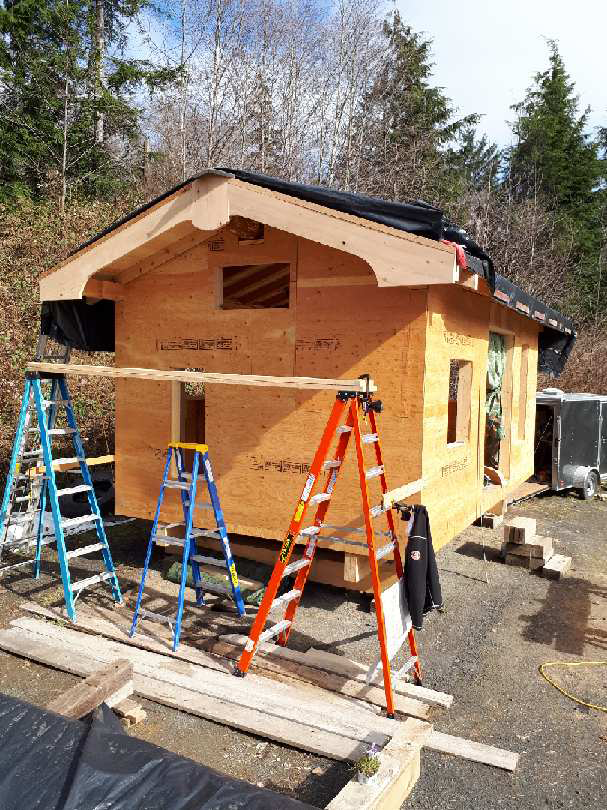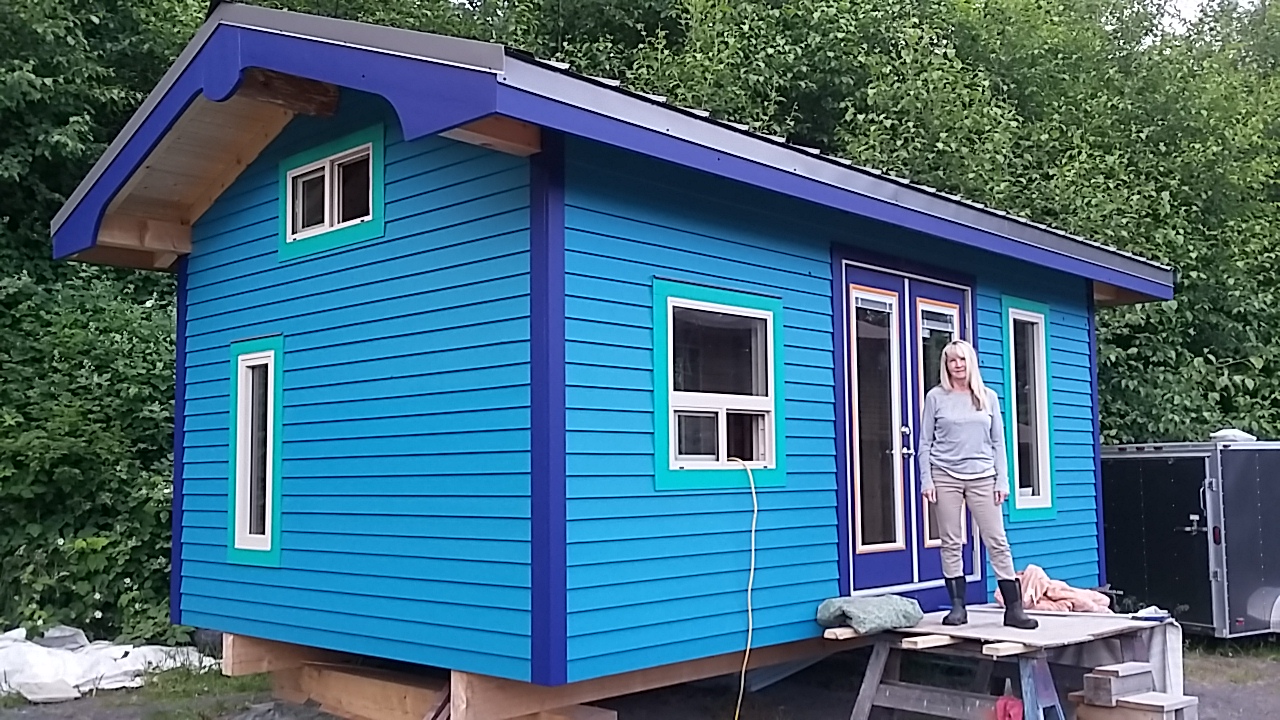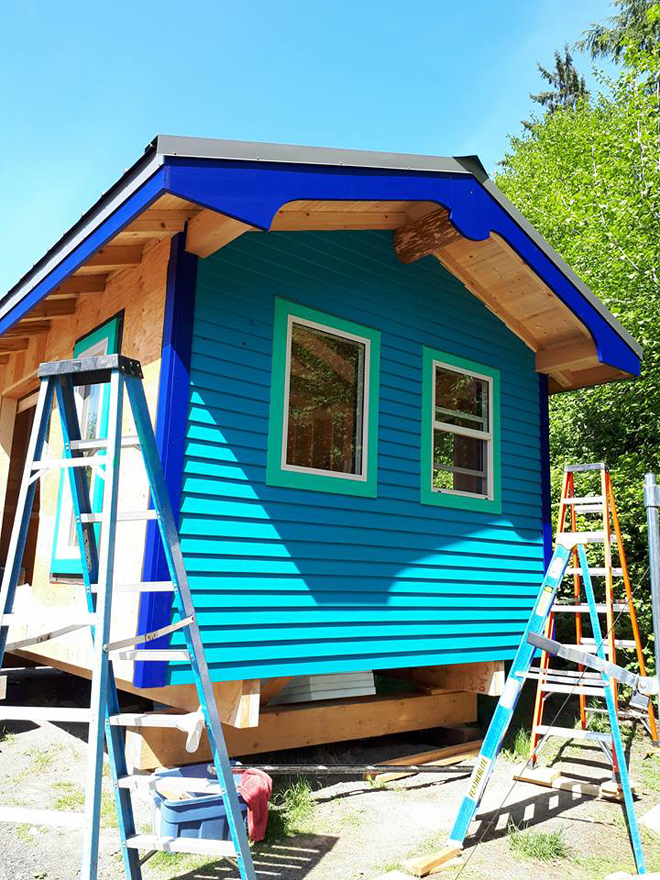By Guy Dauncey –
“All I want is a village somewhere,
far away from the housing scare,
With friends and family,
Oh, wouldn’t it be loverly?
Little homes where we all can live,
A lovely garden so we all can eat,
Shared hearts, shared love, shared hopes,
Oh, wouldn’t it be loverly.”
In May 2018 the average price of a home in BC was $750,000. In Victoria, the average price of a condo was $500,000.

They call it the spillover effect—the reality that if you own a house in Vancouver you can sell it for $2 million, buy a place on Vancouver Island for $500,000, put $1.5 million in the bank, and retire at age 50. Why wouldn’t you? Nothing can stop people from exercising their right to do so.
The result, however, for tens of thousands of people who are struggling to find a home, is the impossibility of ever owning a home, rising rents, and rental vacancy rates near zero that give landlords the ability to pick and choose who they want to rent to based on looks, race, and personal preference. Children? Pets? I’m sorry…
So, the thought of owning a tiny home, or even better, a tiny home that is part of a village community, becomes very enticing, at least for single people and couples without children who have learned to get on with each other in what is, nobody’s denying, a rather confined space.
If we can have legally zoned trailer parks, why not tiny home villages? So, let the present fade away, and imagine…
A wandering footpath that runs alongside a creek … a community orchard, full of fruit trees … a wood-fired sauna built by the villagers … a shared workshop with space to work on projects … a parking space off to one side allowing the rest of the village to be car-free … children playing safely through the village with everyone knowing who they are … shared cars … power direct from the grid or from wind, solar, and micro-hydro with battery storage … a gathering space with a fire-pit and a play area … a central building that serves as a meeting place, kitchen, dining room, a space for dances and feasts, laundry, recycling centre, daycare centre, visiting nurse’s health clinic, library, a place for storage, a spare room for visitors, and an evening movie theatre.

And 20 tiny homes, ranging from 300 to 900 square feet on permanent foundations, designed so that you can start off with a tiny space and expand as your budget allows or your family grows. Regular toilets if the houses are on sewage, composting toilets if not, coupled with greywater treatment beds. Great insulation, great ventilation, and a heat pump to keep you warm in winter.
And ownership, liberating you from the worries of eviction or rising rent, enabling you to put down roots. For the tiny home, allow $80,000. For the land, on the Lower Mainland and Vancouver Island a five-acre lot with space for a clustered village and room to grow food might sell for $500,000, or $25,000 per unit. Elsewhere, much cheaper. The community house could start out as a yurt, costing $15,000 from Pacific Yurts, or $750 per unit. Add $60,000 for development costs, at $3,000 per unit. Call it $110,000 total, or $550 a month on a 25-year 3.5% mortgage.

If the land is owned privately as a strata-title, however, the village could be swept up in the Vancouver tidal price wave, and before you know it a tiny home would be selling for $200,000. The solution is for the land to be owned by a Community Land Trust. A partnership of government and community buys the land and takes it off the market forever. The homes can still be bought, sold, and inherited, but not the land, guaranteeing long-term affordability.
At Bluegrass Meadows, 10 minutes outside Terrace, 15 people are already enjoying just such a life, and another 12 spaces are opening up this summer. And in various places in America landowners have developed tiny homes communities where you can rent your home, just as you do in a trailer park.
Tiny homes villages have also been created for homeless people in the Occupy Madison Village in Wisconsin; the Boneyard Studios in Washington D.C.; Community First in Austin, Texas; Quixote Village in Olympia, Washington; Opportunity Village in Eugene, Oregon; Dignity Village in Portland, Oregon; and other places.
So, what’s holding up progress? Why are people still hiding tiny homes at the bottom of private acreages, away from the bylaw officer’s eyes? What’s stopping municipal councils from eliminating minimum home-size requirements and planners from creating model zoning by-laws? Just simple conservatism, combined with the daily pressure of life in the office. Nothing more. Nothing that could not be solved by a grant from a foundation to develop a set of model bylaws, or a group of village visionaries willing to sit down with the planners and patiently work through the various issues to do with fire protection, roads, water, sewage, setbacks, allowed occupations, and so on.
This is just one of many possible solutions to the housing crisis but judging from friends who vary in age from their 20s to their 50s it’s a desirable solution many people wish could happen.
For it’s not just a home that most people want. For millions of years, we have lived in small clans and villages; the love of community runs deep in our bones. Tiny homes are just one way. We can also do it in urban villages, pocket neighbourhoods, and co-operative and cohousing developments.
Love of home, love of community, love of nature, love of land to grow food, love of meaningful, purposeful work. Combine with good social skills and the ability to manage everyday conflicts, and simmer for 20 years. Put these things together, and we’ll be well on our way to paradise.
Guy Dauncey is author of Journey to the Future: A Better World is Possible. He lives on Vancouver Island. See www.thepracticalutopian.ca

